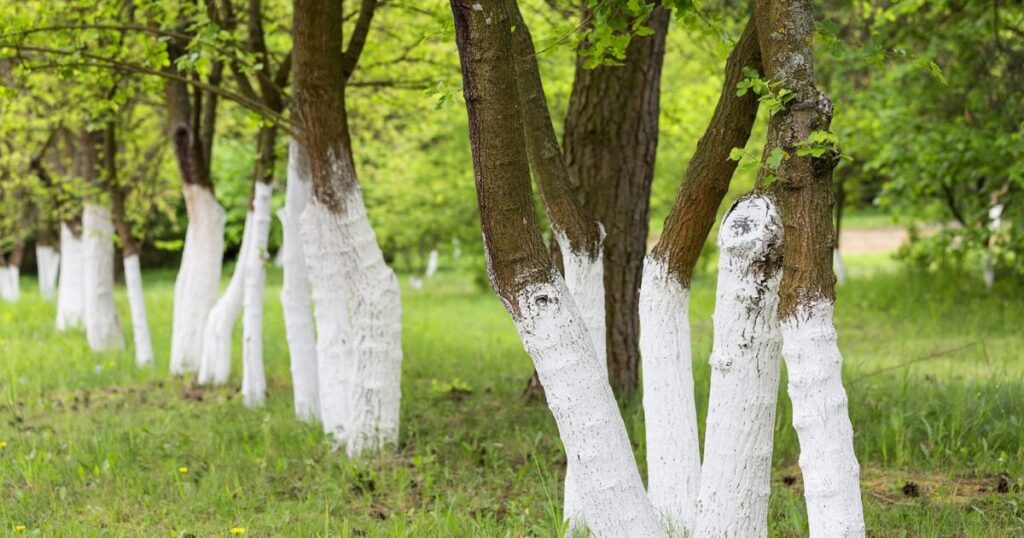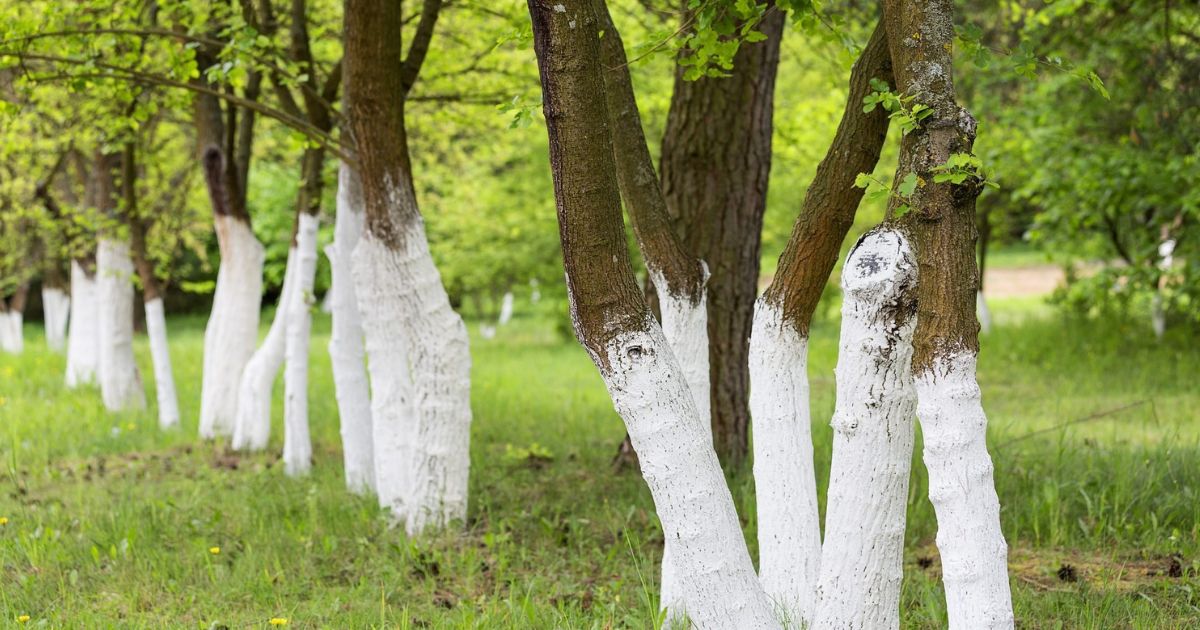The Surprising Reasons Behind Painting Tree Trunks White
Have you ever noticed trees with their trunks painted white and wondered why? This practice, while unusual at first glance, serves several important purposes that benefit the trees and their surroundings. Here’s a closer look at why people choose to paint tree trunks white and the benefits this practice offers.
Protection Against Sunscald
Much like humans can get sunburned, trees can suffer from sunscald, which damages their bark and underlying cambium layer. This can lead to dehydration and make the trees vulnerable to diseases. Painting the trunks white helps reflect sunlight, acting as a sunscreen for the trees and preventing the bark from cracking.

Enhanced Disease and Pest Resistance
Fluctuating temperatures, especially in winter, can cause tree bark to split, making trees more susceptible to infections and pest infestations. A coat of white paint on tree trunks helps seal these cracks and protect the trees from such threats. This method is particularly prevalent in orchards and residential areas where tree health is crucial.
Improved Safety and Visibility
In areas where trees are near roadways, painting their trunks white can significantly enhance their visibility at night or in low-light conditions, helping prevent vehicle collisions. It’s a safety measure that not only protects drivers but also preserves the trees.
Marking for Identification and Conservation
Trees may also be painted white to mark them for conservation efforts or to identify them for maintenance and management purposes. For example, trees that are homes to endangered species, like the red-cockaded woodpecker in the Southern United States, might have a white ring painted around them for protection. Similarly, forestry workers use white paint to mark trees that need to be discussed or treated, ensuring they are easily identifiable.
Best Practices for Painting Tree Trunks
If you’re considering painting a tree trunk, it’s important to use the right materials and methods. Here are some guidelines:
- Avoid oil-based paints as they can hinder a tree’s ability to breathe. Instead, use water-based latex paint.
- Dilute the paint appropriately, typically one gallon of latex paint to four or five quarts of water, and choose paints with natural, non-toxic bases.
- Apply the paint with a brush, and while white is the standard color due to its high reflectivity, other light shades can also be used depending on aesthetic preferences.
- A single application is usually adequate, but in regions with extreme weather, annual reapplication might be necessary.
In conclusion, painting tree trunks white is not just an aesthetic choice—it’s a practical measure aimed at protecting and maintaining healthy trees. Whether it’s to shield them from harsh environmental conditions or to ensure they stand out for safety reasons, this practice plays a crucial role in tree care and management.





